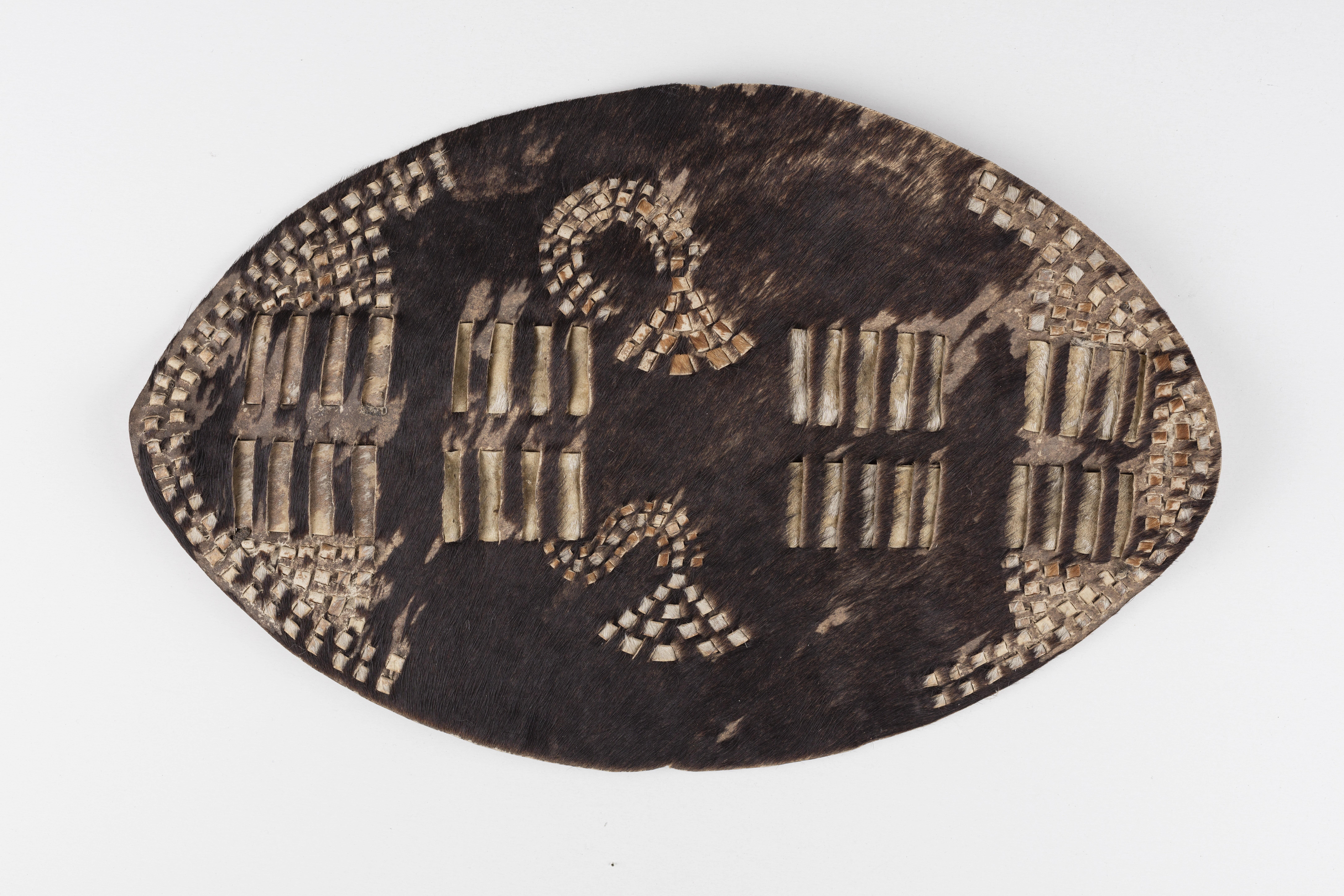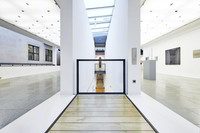A small, oval shield from cow skin with dark fur. The shield is fortified by leather stripes that run through two lines of slots in the middle. Further pushed-in stripes are on both ends alongside the edges and in the middle as two ornaments. On the back, there is a small leather loop for holding fast the shield.
The so-called "ishilunga" shields are typical for South Africa resp. for the Zulu. the colour of the shield shows the civil status and/or the experience of the warriors. The most inexperienced fighters normally used black or dark shields whereas white shields were reserved for the most senior warriors.
This shield indeed was made for the children as a toy because of its small size. The inventory says: "A shield made from an animal fur for war game."
In 1923, Max Hößle committed the object, as part of a collection, to the Gewerbemuseum (Museum of Applied Arts) Ulm. Ulrich Hößle compiled the collection around 1880 in South Africa in the region of Pietermaritzburg in the present province of KwaZulu-Natal. The territory then belonged to the British Colony of Natal.
en

